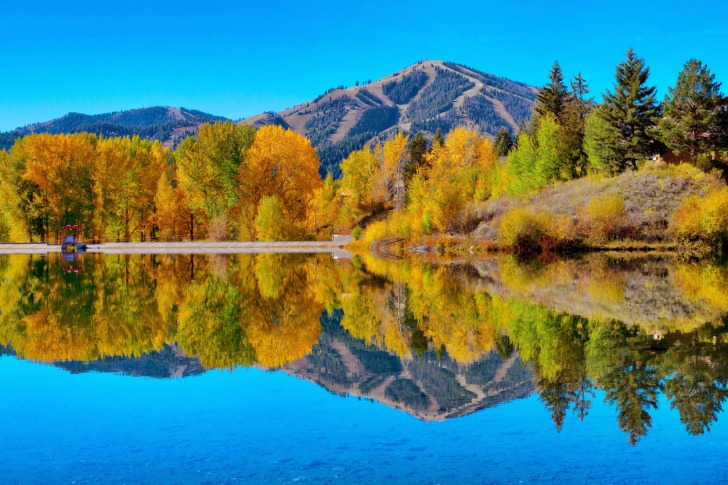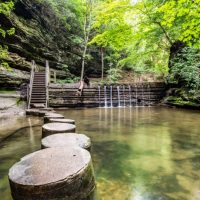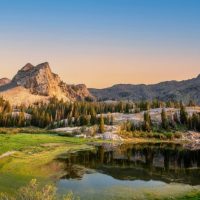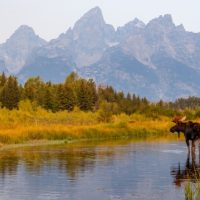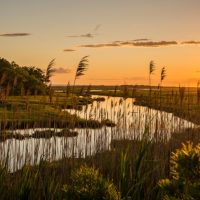From the Spirit of Boise Balloon Classic to the Sawtooth Valley Gathering, there is a fantastic range of outdoor adventure, community, and appreciation for the incredible outdoor lifestyle offered by the Gem State.
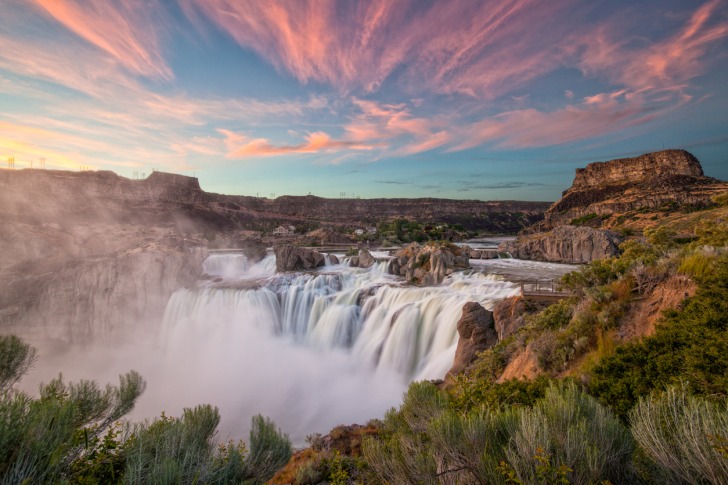
Contents
- So… Are There Snakes in Idaho?
- Snake Species in Idaho
- Rubber boa – Discovered in all of Idaho
- Common/Western Terrestrial Garter Snake – All of Idaho
- Striped Whipsnake – Bottom Third of Idaho
- Gopher Snake – Most of Idaho, except northern counties
- Racer Snake – Most of Idaho, except northern counties
- Western Ground Snake – Treasure Valley
- Night Snake – Bottom third of the state
- Longnose Snake – Treasure Valley
- Ringneck Snake – Isolated pockets near the Utah and Washington/Oregon borders
- Prairie rattlesnake – Central Idaho
- Western Rattlesnake – Lower three-quarters of the state
- Is it Safe to Go on a Trek in Idaho?
- Interesting Snake Facts in Idaho
- 3 Safety Tips for Exploring Nature in Idaho
- Summary
- Idaho Safety Overview
- Frequently Asked Questions
So… Are There Snakes in Idaho?
Indeed, there are! Come and discover these slithering serpents for yourself.
(Hint: Most varieties of snakes aren’t poisonous. Wear boots, step lively, and look out for the ones!)
Snake Species in Idaho
Rubber boa – Discovered in all of Idaho
Langorous and slow-moving, its unique appearance includes a blunt tail combined with smooth, rubbery skin.
Measuring 15 to 33 inches, these nocturnal slitherers thrive under rocks and logs and feed on small mammals and nesting birds.
Known for their gentle natures, they’re also non-venomous.
Common/Western Terrestrial Garter Snake – All of Idaho
Inhabiting forests, grasslands, and Idaho’s peaks, garter snakes are good swimmers, and their diet can include frogs, fish, and tadpoles.
A subspecies of the common garter snake often found throughout the Pacific Northwest, including Idaho, the garter snake can grow up to 55 inches, sporting brown and black coloring, and three yellow stripes.
Striped Whipsnake – Bottom Third of Idaho
Often black, gray, or blueish-green with light-colored stripes along their sides, they reach 30–72 inches long.
Nonvenomous, if threatened, they can bite.
Gopher Snake – Most of Idaho, except northern counties
Also called the Bullsnake due to its size.
Often reaching 67 inches, they’re Idaho’s largest snake.
They inhabit valleys and shrublands and dine on small mammals, eggs, and the occasional reptile.
Racer Snake – Most of Idaho, except northern counties
A swift snake that successfully slithers among diverse landscapes, from deserts to grasslands.
Identified by its streamlined body and agility, this non-venomous snake preys on small mammals and birds.
Western Ground Snake – Treasure Valley
Usually 8–19 inches long, black banded markings alternating with red, brown, or orange, and a shy disposition.
They reside in the southwest, mainly along the Snake River (which should surprise no one, ever).
Night Snake – Bottom third of the state
Traversing Idaho’s nocturnal landscape, it favors rocky terrain and arid regions.
Identified by its keeled scales and subtle markings, this small, non-venomous snake dines (well) on small reptiles and insects.
True, it has an elusive nature, yet the night snake helps maintain Idaho’s ecological balance.
Longnose Snake – Treasure Valley
Decorated with black and red markings on a yellow base, this snake is typically 22–33 inches long.
Residing in Idaho’s southwest deserts, it’s excellent at burrowing.
Ringneck Snake – Isolated pockets near the Utah and Washington/Oregon borders
Slender and measuring 10 to 15 inches, with a faint orange or yellow ring around its neck, its body is usually black, gray, or brown.
Primarily nocturnal and gentle, they help manage insects and other small prey populations in their environments.
Prairie rattlesnake – Central Idaho
It is found in the shrublands, grasslands, and forests.
Their eyes are elliptical, reaching 3 to 5 feet with dark blotches transforming into rings towards the tail.
A bite can be dangerous, yet the prairie rattlesnake will likely freeze or slither away.
Western Rattlesnake – Lower three-quarters of the state
Also called the northern Pacific rattlesnake, some western rattlesnakes possess a dark coloring with light blotches, and others are a light color with dark blotches.
Looking like one another’s negatives.
All have stripes ranging from eyes to mouths and triangular heads and can grow up to 6 feet.
They’re active whenever they want to be, and they can swim!
Curling up in wait to strike, prey includes mice, lizards, and birds.
The telltale rattle is a last-ditch effort to avoid a predator.
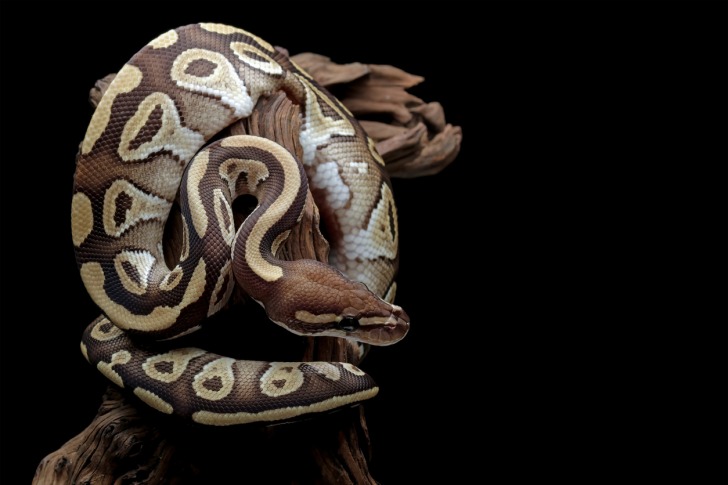
Is it Safe to Go on a Trek in Idaho?
Hiking is an enriching outdoor activity, but you must know the potential dangers.
While snake encounters are possible, most snake species in Idaho are non-venomous, with only a few venomous species like rattlesnakes present.
This is why you will want to stay on well-marked trails, wear sturdy boots, and be mindful when stepping over logs or rocks to minimize the risk of snake bites.
Beyond snakes, you want to be aware of black bears and cougars living in those regions and consider them home.
So get up close and personal with proper wildlife safety protocols, like making noise to alert black bears and cougars that you’re around.
Now, Idaho’s diverse terrain includes cliffs and steep slopes.
So, let’s emphasize the importance of staying on designated paths and avoiding risky maneuvers.
Anyone stepping off a cliff and taking a selfie–please don’t!
The four distinct seasons are among the many charms of Idaho, besides the people and the austere beauty of the landscape and the majesty of the sweeping horizons and skyline.
Unsurprisingly, weather conditions can change rapidly, leading to hypothermia or heat-related issues, so be prepared with appropriate clothing.
Carry sufficient water, a map, and a first aid kit.
Essential and non-negotiable.
Pay attention to trail conditions, be cautious near water bodies, and stay aware of your surroundings.
Now, go outside and play; get some sunshine and fresh air; it’s good for you.
Watch out for killer cold, dehydration, cliffs, cougars, bears, and rattlesnakes.
However, the rewards are good people, the state song, “Here We Have Idaho,” and the culinary specialty “finger steaks,” battered, deep-fried beef strips created in the mid-’50s for Boise’s Torch Lounge by Milo Bybee.
Interesting Snake Facts in Idaho
- Rattle Me This: Idaho has several rattlesnake species, including the Western and Great Basin Rattlesnake. While venomous snakes can be encountered in various habitats, they’re most active during the warmer months.
- Non-Venomous Locals: The majority of snakes in Idaho are harmless. Gopher and garter snakes are common non-venomous species essential in controlling rodent populations.
- Hibernation Habits: During winter, many snakes seek refuge in underground dens, allowing them to conserve energy.
- Camouflage Ninjas: Idaho’s snake species often display excellent camouflage, making them adept at blending into their surroundings.
3 Safety Tips for Exploring Nature in Idaho
- Snake Awareness: Boots, marked trails, caution in stepping over rocks or logs. Knowing your common snakes and their habitats can help avoid unintentional encounters.
- Wildlife Encounter Prep: Idaho’s home to various wildlife, including black bears and cougars. Learn what to do–before an encounter! Understanding wildlife behavior enhances your safety and the animal’s well-being.
- Terrain Lookout: Idaho’s terrain includes cliffs and steep slopes. Stick to designated trails, use caution near water, and prep for the weather with the proper clothes, water, and a well-equipped backpack.
Summary
Snakes only retaliate if cornered.
If you hear or see a rattlesnake, stay calm and move on.
It can be challenging to ID snakes successfully.
And even the nonlethal ones can irritate with their bites.
If a snake bites you, it’s best to get medical attention.
However, if you respect your surroundings, enjoy the fantastic landscape of Idaho!
Idaho Safety Overview
READ THE FULL REPORT: Idaho Safety Review
Safety Index:
- OVERALL RISK: MEDIUM
- TRANSPORT & TAXIS RISK: LOW
- PICKPOCKETS RISK: LOW
- NATURAL DISASTERS RISK: LOW
- MUGGING RISK: LOW
- TERRORISM RISK: LOW
- SCAMS RISK: LOW
- WOMEN TRAVELERS RISK: LOW
Frequently Asked Questions
Does Idaho have a state bird?
Yes, the Mountain Bluebird, known for its rich blue plumage, can be found–and admired–in Idaho’s open country and mountainous regions.
When’s the best time to visit Idaho?
From late spring to early fall, roughly May – September offers excellent hiking, camping, wildflowers, and great weather.
Winters will be cold, yet the season provides a fantastic range of outdoor recreational activities.
Does Idaho offer fishing?
Yes, along some of the loveliest stretches of river in the lower 48, you can fish for cutthroat, catfish, and rainbows.
